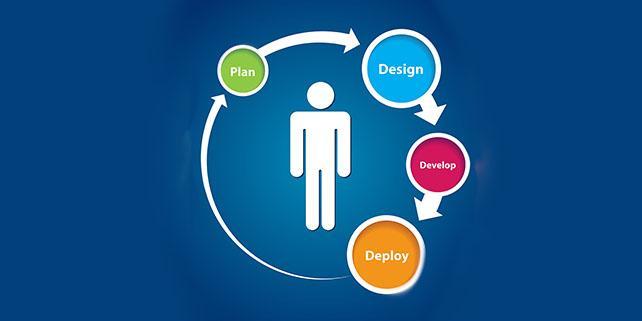The Difference between UX and UI
- Published on

Websites and apps that work well are often complimented for having a great UX or fantastic UI. This article explores the difference between UX and UI. When you hear someone criticize or praise either the UX or UI of a site, they may appear to be using the terms interchangeably. While they are related, there are some significant differences between the two.
UX Design is referencing User Experience Design, while UI Design is short for User Interface Design. While they both are design-focused roles, and at times they do work hand-in-hand, they are distinct and separate roles.
UX Design
UX Design involves the breadth of areas that impact a user’s interaction with an app, website, product, or even a service. It involves planning, research, and information architecture long before designs are formulated. A successful UX designer will enable users to complete tasks easily, and even make them delightful.
A UX Designer is concerned with every interaction a user or customer has with a product, tool, or company. From the first interaction through the last, the UX designer thinks about these interactions. Take for example a website that sells products. The UX designer will be concerned about a customer locating the product either by search or clicking through categories, adding it to a shopping cart, the checkout experience, the information provided to the customer after the checkout is complete, and even a return or exchange process. The UX covers the complete experience, and can cover many areas: competitive research, customer research, wireframing designs, prototyping, creating initial mock-ups, testing, sharing ideas with a user interface designer, working with product management, working with designers.
With all these roles, in a large organization a UX designer may specialize, and focus on areas such as research, planning, or information architecture.
UI Design
While UX design covers the complete breadth of interactions, UI design is focused on the look, feel, aesthetics, and sometimes branding. UI design is considered by some to be the modern day equivalent of a graphic designer, but this definition is incomplete. A UI designer takes their direction from a UX, much like a builder takes direction from an architect. And just as a beautifully planned building will not succeed without a skilled craftsman to complete the work, a well-planned app or website from a UX designer won’t succeed without a skilled UI designer to complete the work.
When creating websites and apps, a UI designer will complete more final prototypes, the interaction experiences that a user encounters, and more recently working with responsive designs so that a site works well on various size screens and devices.
In some organizations, a UX professional may also have UI responsibilities, and may need to be able to implement designs they have created in the UX process.
Where you can learn UX Design and UI Design
There are a number of resources where you can learn the skills behind these professions. They range from UX courses and UX workshops through complete degree programs. For example, Bentley University in the Boston area has a complete master’s degree program, and American Graphics Institute offers two-day UX classes in Boston, NYC, Philadelphia, and one-day online classes.
About the author
Jennifer Smith is a user experience designer, educator and author based in Boston. She has worked in the field of user experience design for more than 15 years.She has designed websites, ecommerce sites, apps, and embedded systems. Jennifer designs solutions for mobile, desktop, and iOT devices.
Jennifer delivers UX training and UX consulting for large Fortune 100 companies, small start-ups, and independent software vendors.She has served as a Designer in Residence at Microsoft, assisting third-party app developers to improve their design solutions and create successful user experiences. She has been hired by Adobe and Microsoft to deliver training workshops to their staff, and has traveled to Asia, Europe, India, the Middle East, and across the U.S. to deliver courses and assist on UX design projects. She has extensive knowledge of modern UX Design, and worked closely with major tech companies to create educational material and deliver UX workshops to key partners globally. Jennifer works with a wide range of prototyping tools including XD, Sketch, Balsamiq, Fireworks, Photoshop, Illustrator, and Blend for Visual Studio. She also works extensively in the fields of presentation design and visual design.
Jennifer is also an expert on Photoshop, digital image editing, and photo manipulation. Having written 10 books on Photoshop, and having consulted and provided training to major media companies and businesses around the globe.
Jennifer is the author of more than 20 books on design tools and processes, including Adobe Creative Cloud for Dummies, Adobe Creative Cloud Digital Classroom, and Photoshop Digital Classroom. She has been awarded a Microsoft MVP three times for her work with user experience design in creating apps for touch, desktop, and mobile devices. Jennifer holds the CPUX-F certification from the User Experience Qualification Board and assists others in attaining this designation in leading a UX certification course at American Graphics Institute. She is a candidate for a Master’s degree in Human Factors in Information Design.
